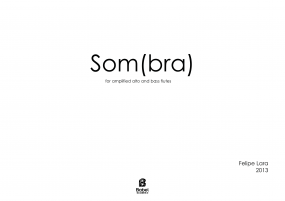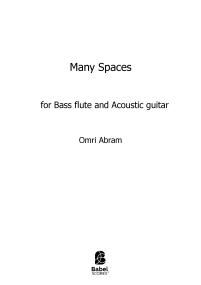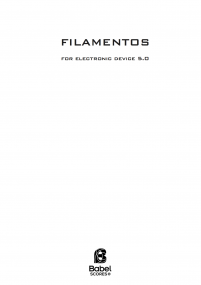Recherche avancée
Tragic duet
ISMN : 979-0-2325-8026-5
- Identifiez-vous pour créer une liste
In 2016, I was lucky to visit the double exposition 'Francis Bacon: Invisible Rooms' at the Tate Museum in Liverpool. First, I experienced Francis Bacon's painting world–a rich source of inspiration for my most recent works–and, secondly, the work of the Austrian artist Maria Lassnig.
In the oil painting 'Tragisches Duet/Dramatisches Duet', Lassnig displays two human figures within a white frame, with asymmetric roles, depicting the human body concerning the reality-fiction paradox. The figure on the right side stays in the fetal position, and a noticeable shadow accompanies it. The shape placed on the left (without shadow) seems to be straightening the White frame in which the two bodies rest.
The tragic of this duet is what the painting itself implies: Lassnig expresses a questioning attitude towards the creative process. It reveals a recursive operation from outside the frame and also a representation of herself capturing the reality/fiction ambiguity.
These are the concepts that have inspired my work Tragic duet. The definition of 'fictions' has been understood as relatively homogeneous musical gestures. They can be as recognisable in both flutes and recorders as they are complementary. In contrast, other musical gestures present obscurely blurry behaviour, infringing the limits of fiction.
The musical form of this work is limited to an irregular-ascendant outline given by changes in pitch range.
The piece begins with bass flute and Paetzold contrabass recorder and ending with flute and alto recorder. In some way, my decision to start/finish the piece with these instruments is reflecting Lassnigʼs recursiveness of the frame inside the frame. I also considered the concept of fiction in the construction of the score as well as its own transgression. Here, fiction relates to elaborating figures which are particularly relevant to the work.
Certain distorting operations link to an attempt to transgress so that fiction and transgression give birth to different kinds of counterpoints: the parallel/punctual coordination, splitting, combining blurred lines and, lastly, madrigalisms.
I want to thank Paola Muñoz Manuguián and Karina Fischer for their creative contirbution in the wiriting process of this work.
(Cristian Morales-Ossio)
Paetzold Double bass recorder
Pages - 22







